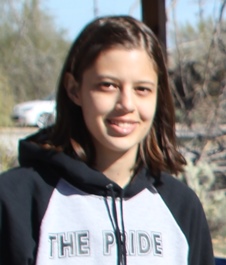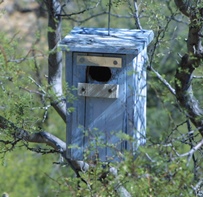|
|
|
Nest Boxes for Urban Birds Email #4 You are receiving this because you expressed interest in Tucson Audubon's NEST BOXES FOR URBAN BIRDS pilot project. Here are some updates on the project.
Many of you now have boxes mounted. In addition, we have put up three boxes and a gourd at Tucson Audubon's Mason Center, a gourd at our Atturbury Wash restoration project and a box and a gourd at Tucson Audubon's Paton Birder Haven in Patagonia. There is still time to put up a box. See the sections below on "Building and Buying Boxes" and "Tips on Placing and Mounting your Box." However, we are now moving into the monitoring phase. In this phase we need everybody with boxes to let us know what is happening in that box. Here's how to monitor your box: 1. Go to www.nestwatch.org and sign up for a free account. 2. Go to www.tucsonaudubon.org/nestbox and download the "nestbox monitoring instructions" (the first item under "Current Status"). Follow the instructions in this document. They will help you set up your NestWatch account and associate your nest box observations with Tucson Audubon's nest "community," so that data will be shared with us. If any questions arise, don't hesitate to contact Kendall Kroesen at (520) 209-1806.
Building and Buying Boxes If you didn't get one of our experimental boxes, you may be able to build your own, or buy one. Build your own using designs we have used - Go to www.tucsonaudubon.org/nestbox, go to the bottom of the page, and download plans for either an American Kestrel or Ash-throated Flycatcher box. Audubon Birdhouse Book - Purchase the Audubon Birdhouse Book (2013 edition). It is now available in our Tucson Audubon Nature Shop, call 520-629-0510 or go by the shop at 300 E. University Blvd. A kestrel box design is available on page 91 (again, very similar to the design we used). For Ash-throated Flycatchers, us the "Xbox" design on page 51.
Local bird stores - Local bird stores like Wild Birds Unlimited (two locations in Tucson, one on Tanque Verde Road and one on Oracle Road) may also have boxes. If they have a screech-owl box, that would likely work both for screech-owls and kestrels. Tips on Placing and Mounting your Box American Kestrel - Kestrel boxes should be mounted at least 8-10 feet off the ground. They like the nest hole to face approximately north. It would be best if their approach to the box did not have obstacles like branches hanging down in front of it. At the same time, we believe that in our climate boxes will need as much shade as possible. An ideal place might be on the north side of a house with eaves that will shade the box. Note that in some nest box studies, kestrels have accepted nests lower to the ground when others weren't available. You will have to balance the need for height with the necessity to reach to boxes in order to open the box's door and count eggs or chicks. Western Screech-Owl - The kestrel box may also be used by Western Screech-Owls. Screech-owls are small, gray owls with feathers that stick up like "ears" (like the Great Horned Owl, but much smaller). Screech-owls are less picky about height and orientation. Shade on the box would always be a good idea. Ash-throated Flycatcher - Smaller boxes have been designed for Ash-throated Flycatcher. This medium-sized flycatcher catches nests in open desert scrub especially if there is a wash or stream in the area. They eat insects return to trees (or saguaros) with holes in them. They also like a more or less unobstructed approach to the nest. Their nests should be at least 4.5 feet off the ground with 8 feet being optimum. Mounting boxes in mesquite trees or in the vicinity of other shade sources should help to keep nest temperatures from rising too high. We believe the similar-looking Brown-crested Flycatcher will also use this kind of box. Lucy's Warbler - This is one of the smallest warblers in North America and one of only two hole-nesting species. It also nests in more arid habitat than any other warbler. Lucy's Warbler breeds primarily in dense stands of mesquite trees and other thickets. They are generally thought not to adopt nest boxes, but we have been told by two people that they have nested in gourds. The Audubon Birdhouse Book has instructions for using gourds to make nests for Purple Martins. Instructions for Lucy's Warbler are similar, but make a much smaller entry hole (1 to 1 1/8th inch diameter). The small hole will let the warbler in but keep non-native house sparrows out. Boxes and gourds might best be mounted in dense foliage with plenty of shade. In some areas Bewick's Wren (also a very small bird) may nest in the gourd. Donations Donations toward the nest box pilot program are welcomed. You can donate online here (in the comment box note that it's for the nest box pilot program) or call 520-209-1802. To learn more about the project follow this link: tucsonaudubon.org/nestbox. Questions? E-mail: Kendall Kroesen
| |||||||||
|
Thanks for your interest in Tucson Audubon's NEST BOXES FOR URBAN BIRDS project! -Kendall Kroesen Sign up for other email subscriptions
To opt out of all email communication from Tucson Audubon, follow
the click here link at the bottom of this email | |||||||||
| |||||||||



